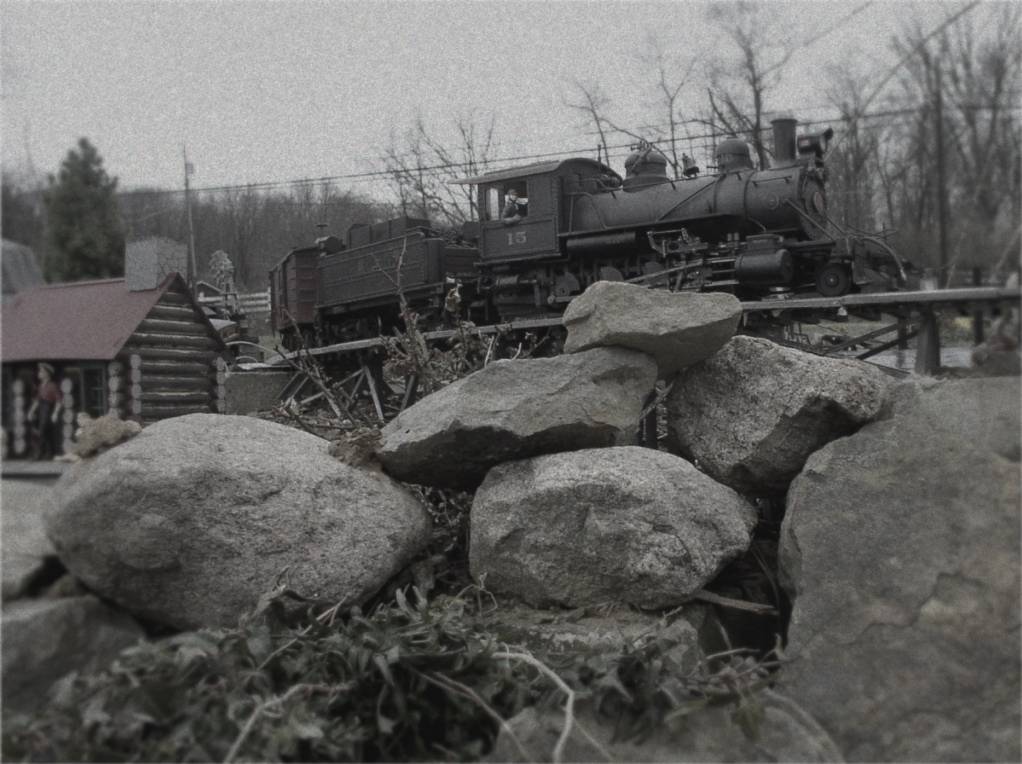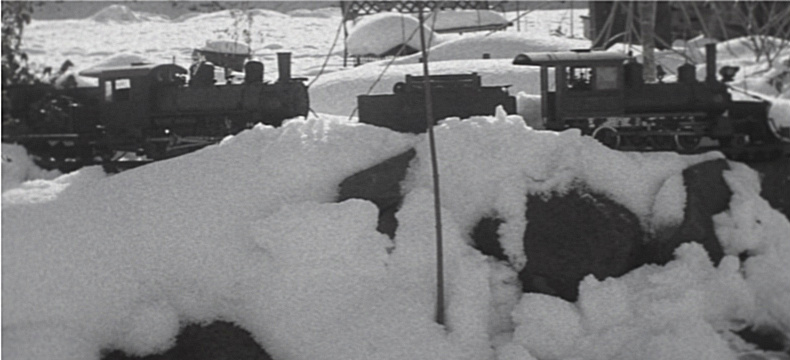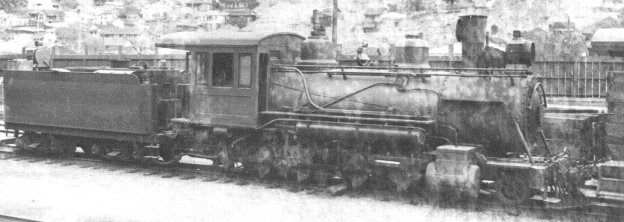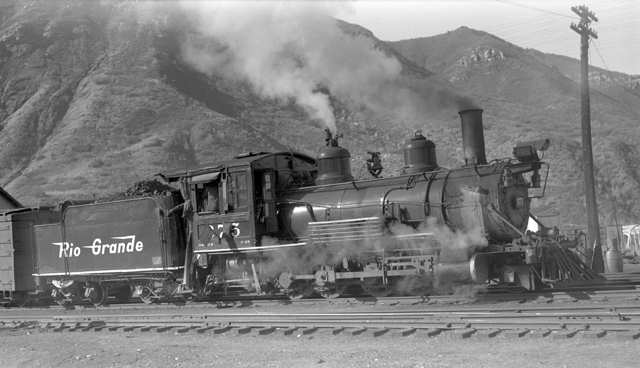A Bachmann 'Connie' on a diet


AVRR 2-8-0 #15 drifts across a trestle with local freight in tow on a dreary April afternoon in 1946
The first (of the larger class) 2-8-0, was delivered in 1921 as a replacement for wrecked #19 -- This new locomotive was a very big brute. An outside framed 2-8-0 rebuilt for the AV by Baldwin from the boiler and cylinders of a nearly new but wrecked standard gauge ten wheeler. With her larger size and modern superheat technology, she soon proved to be able to easily handle double the tonnage of any of the five sisters on the low grades of the AV. Her Baker valve gear was both easier to lubricate and required less maintenance than their old style Stephenson's link reverse as well. The AV's brass hats were quite simply tickled with it's performance -- even if the MoW supervisors were pretty annoyed because she pounded the rail more and quite a few lineside structures and signage needed to be moved back to accomodate the wider loading gauge.
#15 would become the second locomotive of the class. Built to the same Baldwin 10-30E chassis design as 'new' #19, but with a still larger boiler from another donor wreck, she was delivered from the standard gauge interchange at Oil City on a snowy February day in 1923.

Typically, the AV chose to save money in odd places and had her built with old fashioned slide valves - as the boiler donor's piston valve cylinder casting was broken when she rolled over.
#15 would enter service Mar 2, 1923, and the original #15, eldest of the five sisters who had served the AV so long and well, was temporarily renumbered #21 until the replacement for #16 was ready in early 1924, at which time both sisters #15 and #16 were traded in to Baldwin, and presumably scrapped.
A total of 6 were eventually purchased. Of these newer 2-8-0s, #15, #16, #17 and #20 were still in service as of June 1960. #19 was listed as stored servicable and #18 was listed as wrecked/derelict.
The Model - One of the persistent minor inconveniences of anchoring your pike in time is, well... time. MOST things have a limited service life, that's why you won't often see a woodburning 4-4-0 pulling double stack intermodals in the real world.
Sooner or later I simply had to address the simple fact that an 1880s 2-8-0, no matter how well loved, maintained, and even reboilered, would be rather unlikely to still be in regular service after WWI, let alone into the summer of 1960. So the quest began for the 'next' class of freight power on the Allegheny Valley. Several probable avenues were explored. I was actually leaning in another direction altogether when I ended up with a fixer-upper Bachmann Spectrum 2-8-0, popularly called a "Connie".
There was only one really major problem with it from the start. The 'Connie' is this huge pig of a thing in 1:20.3 scale and my AV is +/- 1:24 I knew from reading several forums that others had downscaled them before. It was just going to take a little meatball surgery....
I also didn't care for the way the domes were arranged, so I moved them and shortened everything. - resulting in a very husky look. I also shortened the pilot by about 1/2". The factory piping, while visually interesting, made absolutely no sense. So it was stripped and re-routed in a more prototypical manner while I had things apart.
A cab from an original battery powered Bachmann Big Hauler changed the scale, and made it look even beefier.
The resulting engine has much the same stance and visual heft as Baldwin 10-30E Shannon-Arizona Mining #1..

Or her better known classmate Crystal River 103/D&RG 432/D&RGW 375

The Connie tender trucks got narrowed by about 1/8" on both sides, and strengthened. This eliminated the flex feature, but should keep them from breaking ever again... Left is stock, right modified.
Nearly ready for service..... as soon as we get that gear changed and couplers mounted!
There are still a few spots on the layout where the clearances are closer than I'd like, but it goes around.
Thanks for stopping!